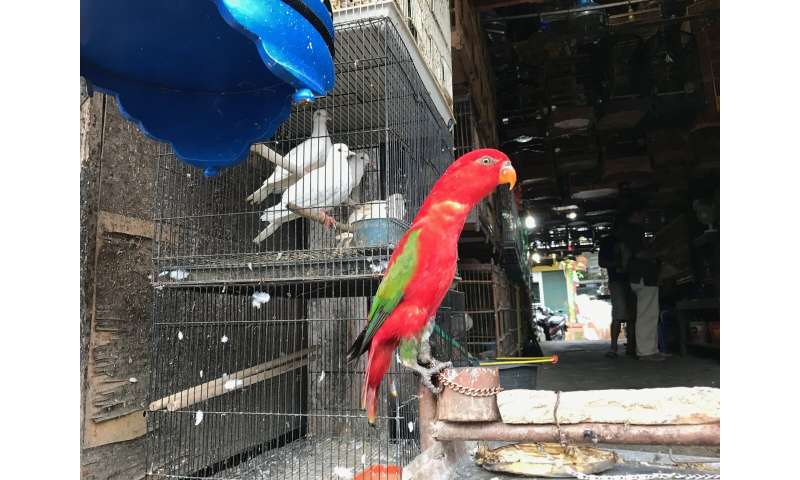Breaking the chains: Dismantling the illegal parrot trade

DNA databases are often used by police to place criminals at the scene of a crime, but scientists from The Australian National University (ANU), in collaboration with King's Forensics in the UK, are using cutting-edge, low-cost genomic sequencing technology to save trafficked parrots caught in the illegal wildlife trade.
Chief Investigator Dr. George Olah said the forensic genomic toolkit is similar to INTERPOL's I-Familia database used to identify people based on international DNA kinship matching.
Dr. Olah will travel to Indonesia next month to work with local authorities and researchers to combat the illegal parrot trade, which is rife in the country. The researchers say Indonesia has been identified as the highest priority country for parrot conservation.
"This research project is like CSI, but for parrots," Dr. Olah, from the ANU Fenner School of Environment and Society, said.
"For traded wildlife, we don't yet have a widely used DNA database like the one INTERPOL is using, for instance, to identify missing persons through international police cooperation."
"Once we have it, we can analyze the trade network, showing which birds are coming from which islands."
"We hope that after a few years, we will have a map that shows the main trade routes so authorities can focus on those islands and work with communities there to see who is behind the poaching and why."
"Parrots are, by number, among the most trafficked birds in the illegal wildlife trade."
The researchers will collect samples from threatened species, such as the yellow-crested Cockatoo or the Sumba Eclectus, via a feather or a drop of blood taken from a nestling. They will then sequence the birds' DNA using nanopore technology.
The data will then be fed into a genetic database, which law enforcement agencies around the world can consult when investigating parrots they believe have been taken illegally from the wild.
The toolkit will also facilitate the reintroduction of confiscated parrots, helping depleted wild populations to recover.
"Currently, there might be confiscation of parrots in Java, but no one knows where in the wild they were taken from, so they end up in rescue centers. I visited a few of these centers and often they're really crowded," Dr. Olah said.
"But if we can prove to the authorities that the birds came from a particular island, then after health screening and disease testing, we can facilitate them being moved back there."
Dr. Olah said in addition to being a threat to biodiversity, wildlife trafficking is increasingly a global public health issue because of its role in spreading zoonotic diseases.
"This is a huge issue, not only for this region but also globally," he said.
"So if we know more about the illegal wildlife market, we can safeguard not only the wildlife but humans too."
The research team will initially focus their efforts on the illegal parrot trade in Indonesia but plan to collaborate with other countries of trade hotspots while also implementing the database in Australia.
Provided by Australian National University